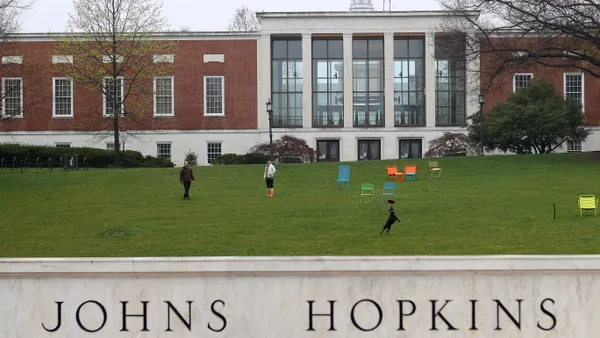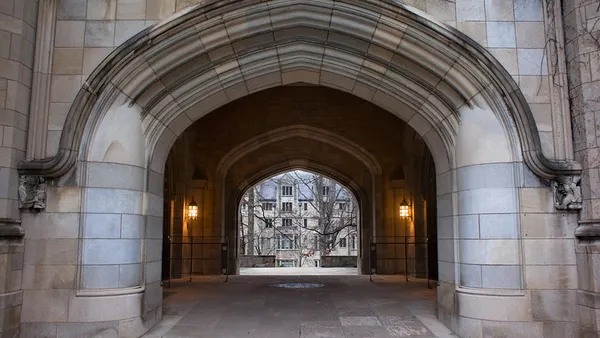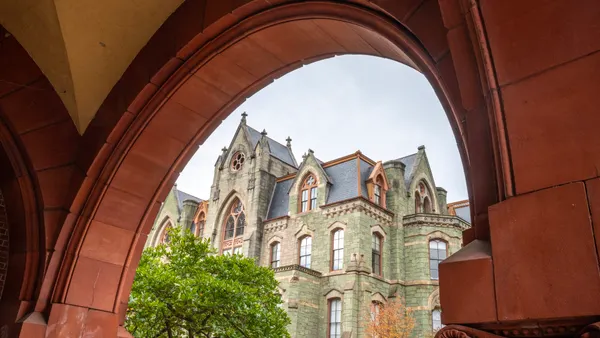The start of the year marks budget season for many states, and governors nationwide have been putting forth spending proposals.
While not finalized, many of these plans call for significant increases in public higher education funding. That's in part because federal coronavirus aid routed to local and state governments improved budget outlooks, leaving state coffers flush. State investment in postsecondary education is expected to skyrocket by more than 8% in fiscal 2022 from the previous year, according to the latest Grapevine forecast, which doesn't even account for federal relief.
However, the survey also doesn't factor in ballooning inflation, which likely will eat away at this increase. Inflation rates and declining enrollment in many regions need to be taken into account when analyzing state budget proposals, said Tom Harnisch, vice president for government relations at the State Higher Education Executive Officers Association.
We have summarized a sample of budget plans below that are worth watching as they advance in the legislative process.
Illinois
Gov. J.B. Pritzker, a Democrat, dropped a $45.4 billion draft budget that features a proposed 5% increase in funding for two- and four-year public colleges in the state.
Overall, his higher ed budget plan is $2.2 billion, a $208 million increase from the last budget. Public universities would receive nearly $55 million more, and community colleges would get an additional $13 million.
About 30% of the proposed $2.2 billion would go toward the University of Illinois system, which would receive $650 million. Another $203 million, or less than 10% of the higher ed budget, would be designated for the Southern Illinois University system.
Pritzker also wants to set aside $122 million more for a state grant program to raise its total funding to $601 million. The change to the Monetary Award Program would make financial aid available to an estimated 24,000 more students. It would also pave the way for the state to increase the maximum grant award from $6,468 to $8,508, which is 50 percent of the average cost of tuition and fees at an Illinois public university.
Minnesota
Minnesota officials have projected a $7.7 billion budget surplus for the state, leading Gov. Tim Walz, a Democrat, to propose supplemental funding to the state's two-year budget approved in 2021.
Many of his planned uses for the extra funding would create new financial aid initiatives.
His proposal would establish a pilot program to waive college application fees, with an initial investment of $10 million. It would benefit undergraduate students applying to tribal, public and private institutions.
It would also devote nearly $7 million initially to a program that would have campuses either establish or expand support services for students who have children. Students who are parents tend to face barriers to degree completion, and they benefit from advising, the proposal notes.
The University of Minnesota would receive an additional $43 million in 2022-23 to help it offset students' cost of attendance and fund enhanced student services. Minnesota State University would get $39 million more to support t core operations affected by the pandemic as well as various needs like student mental health, students' basic needs, such as housing, and career training.
Tennessee
Gov. Bill Lee, a Republican, has devised a nearly $2 billion higher ed budget plan that includes $90 million in general funding for the state's public colleges, which would guarantee a tuition freeze.
Notably, it would earmark $1.2 billion for colleges' capital improvements, with $250 million for Tennessee State University, a historically Black institution that was chronically underfunded for decades, according to a state audit. The review said the state could owe Tennessee State up to $544 million.
About $75 million would be channeled to a state financial aid program, the HOPE Scholarship, that primarily benefits Tennessee high school graduates enrolling in an eligible public or private college. The cash infusion would increase the scholarship award to $5,100 per year for students attending four-year colleges and $3,200 for students at two-year schools.
The current awards are up to $3,500 a year for first-year and sophomore students attending four-year schools and $4,500 for juniors and seniors. Students at two-year colleges can receive up to $3,000 a year.
Lee wants to send $6 million to the University of Tennessee at Knoxville to open an Institute of American Civics that will be housed in its Howard H. Baker Jr. Center for Public Policy.
Details on the institute are scant, though the UT system's president said it would "support and enhance statewide efforts to highlight the role American institutions play in resolving conflict, advancing human dignity and making public policy."
Connecticut
Gov. Ned Lamont, a Democrat, proposed a $24 billion higher ed budget plan.
It most notably would provide $65 million to help the Connecticut State Colleges and Universities system to boost enrollment with tuition assistance.
Last year, the state legislature devoted more than $81 million from a budget surplus to increase funding for all of Connecticut's higher education entities to help alleviate pandemic-induced costs, The Connecticut Mirror reported.
Lamont's proposal maintains about $64 million of that aid for another year.
Pennsylvania
Gov. Tom Wolf, a Democrat, has perhaps proposed one of the largest higher ed funding boosts in the nation. Under his plan, the Pennsylvania State System of Higher Education would receive $75 million more, which amounts to nearly a 16% increase from the previous year.
PASSHE would get a total of $552 million.
Wolf has also proposed more modest increases for other state-related institutions, which are publicly funded but operate with less state oversight.
Chancellor Dan Greenstein said if the legislature passes Wolf's funding proposal, PASSHE will freeze tuition, which it has done for three years, PennLive.com reported.













